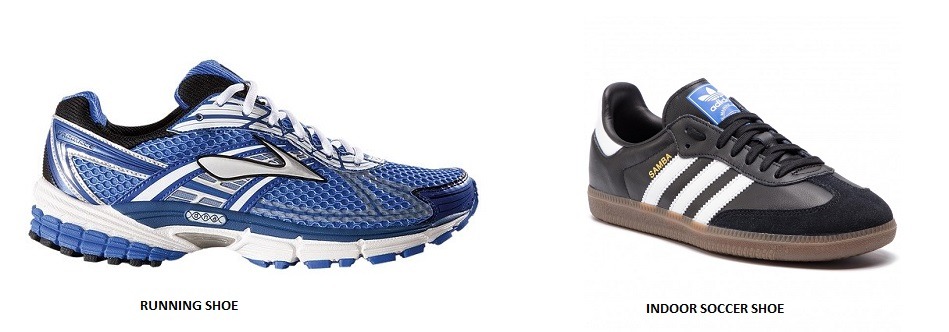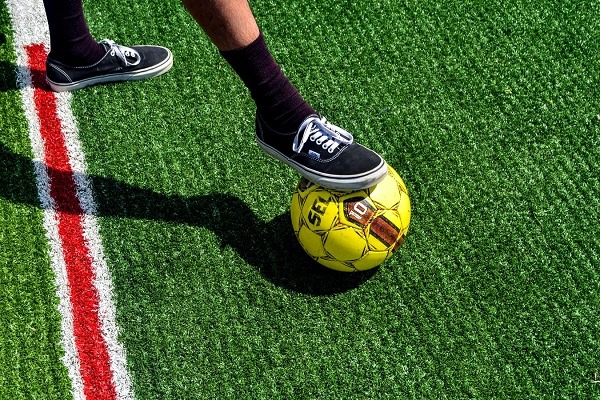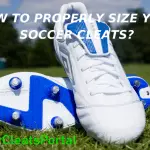After buying a new pair of indoor soccer shoes or turf cleats and feeling very comfortable in them, many people consider using them while doing other activities. There is also the possibility that you have an old pair that you don’t use anymore, and you feel that it’s a waste for them to sit in your closet.
However, is this truly a good idea? Can you use your soccer shoes for running? Technically speaking, you can use your indoor soccer shoes when running outdoors. You can use them for doing small runs but you will be better of if you don’t do much running in your soccer shoes mainly for health reasons.
In the following lines, I’ll give you a quick rundown of all pros and cons of wearing indoor or turf soccer shoes outside of the playing field.
What Is The Difference Between Soccer Shoes & Running Shoes?
Technically speaking, you can use your indoor soccer shoes when running outdoors. As long as you don’t intend to do regular and long runs, soccer shoes should do the job. The real question is how they compare to your regular running shoes? Will you encounter any major problems when doing more serious running sessions?
– First off, the sole of your average running shoe is very different from the sole of an indoor soccer shoe. They are much thicker on running shoes and provide you with more comfort. Thicker soles are made to have better shock absorption. This will be especially noticeable on longer runs, or when jogging on a concrete surface. The front of the shoe is thin so you can put more power into your running. The part under the heel is very thick. This is done because this part of the shoe lands on the ground first. The extra padding helps to combat the repeated impacts of your feet.
In comparison, indoor soccer shoes have thin soles without the extra padding as you do not need to do long runs on hard surfaces. You will feel this when covering longer distances. Also, soccer shoes will wear out faster on hard surfaces. The rubber on the bottom will lose its grip, and you will easily slip when playing indoor soccer.
The construction of the sole of the running is specifically design for providing better arch support. Too much running with other types of shoes can cause arch pain, back pain, and even permanently alter the shape of your feet.
– Another important difference is that the top of running shoes always points a bit upwards. Running shoes are made to provide better support for your arches. This is not the case with indoor soccer shoes because their tip needs to point straight. This is done to ensure better ball control. Because of this, regularly running long distances with your indoor soccer shoes can even lead to some health problems, especially knee injuries and back pains. Running shoes do a much better job when dealing with these problems as the sole of the shoe is thicker and made for reducing the impacts on your foot.
– Soccer shoes by their nature are meant to be as tight as possible mainly for improving the control of the ball. On the other hand, running shoes do not have to fit as snug as the soccer shoes. For that reason, soccer shoes are mainly made from leather or synthetic leather materials that mold better to the foot and that has an adverse effect on their breathability. On the other hand, proper foot ventilation is very important for running shoes especially for those who are doing long runs. Running shoes are made from more breathable fabrics for that reason.
Can you run in turf soccer cleats?
The same problems can be applied to running with turf soccer cleats. The one difference is that turf soccer cleats have a bit thicker soles than indoor soccer shoes, because of the rubber stubs. Nonetheless, they will wear down quicker when running on hard surfaces, and the above-mentioned problems will still be present.
When all this is taken into account, you will be better of if you don’t do much running in your soccer shoes.
Can I Wear Indoor Soccer Shoes or Turf Soccer Cleats Casually?
If you like how they look, there is no reason for you not to wear indoor soccer shoes in your everyday life. Actually, the highest-selling indoor soccer shoe, Adidas Sampa, is worn by many as a casual shoe.
You should be aware of a few points, though. As we mentioned, the soles of these shoes are really thin. This can be a problem when you walk a lot. Even though they are light and have a good grip, these shoes aren’t made for everyday comfort. They are originally meant to be used for a couple of hours a day. Sneakers, on the other hand, have thicker soles specifically designed for everyday walking.
Furthermore, if you still use your soccer shoes when playing soccer, you can lose a lot of traction as they will wear down from walking after some time. This is a downgrade from your average sneaker. However, if you aren’t using your soccer shoes for playing anymore, there shouldn’t be any major problems with using them casually. You just won’t be very comfortable on the longer walks.
The same problems are present when wearing turf soccer cleats for walking. The sole is a bit thicker and they may be a bit more comfortable for a walk than indoor soccer shoes, but it’s hard to say for sure.
Can I Wear Running Shoes for Indoor Soccer or Turf Surfaces?
When talking about indoor soccer, you can wear your running shoes when playing. However, this will bring some downsides to your game. You will probably experience less traction than when playing with indoor soccer shoes. This is especially the case if the sole of your running shoe isn’t made of rubber.
Running shoes have thick soles filled with air in order to lessen the contact when running. This is not very desirable for indoor soccer where you will also have to do many side movements and every bit of traction you can get is welcomed.
Also, you will have to sacrifice a good portion of your ball control capabilities. The front part of an average running shoe points up and this can be a nightmare when trying to shoot the ball in the right direction.
When talking about turf or artificial grass surfaces, you are better off if you avoid running shoes entirely. The surface can be slippery, and you will have problems all over the court. The shoes won’t have enough traction for any serious playing, and you can even get injured.
Also, all ball control disadvantages mentioned above remain relevant on turf terrain.
Do Soccer Shoes Make You Run Faster?
This mostly depends on the running surface. If the terrain is wet and slippery, you will be faster in your soccer cleats than in any regular running shoes because of the better grip. On hard and dry surfaces there won’t be much difference, but soccer cleats can still help you with a bit of traction.
However, when running on concrete or some other solid terrain, plastic cleats can’t be used. Turf soccer cleats, on the other hand, can be used even on concrete and they will probably make you slightly faster, as there will be less slipping with the little rubber studs. Keep in mind that turf soccer cleats can be damaged more quickly when running on concrete, though.
There can also be a weight difference between soccer cleats and regular shoes. However, unless you are running a 100 meter run for the Olympic gold, there won’t be any noticeable improvements because of the shoe’s weight. All in all, soccer cleats should allow you to run faster, but this probably isn’t worth it. Regular running shoes are much more comfortable for long runs, and soccer cleats can deteriorate faster when used on unintended surfaces.
Final thoughts
If you are planning to run occasionally then soccer shoes will do the job just fine. But if you are seeing it more seriously you should invest in a proper pair of running shoes.
Soccer shoes will deteriorate more easily if they are used outside of a soccer field and there is always the possibility of an injury.
After all the price of an average soccer or running shoe has dropped significantly so it would be wise to invest in a separate pair for both activities.






